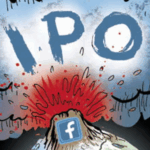 “Data Driven Thinking” is written by members of the media community and contains fresh ideas on the digital revolution in media.
“Data Driven Thinking” is written by members of the media community and contains fresh ideas on the digital revolution in media.
Today’s column is written by Jeremy Hlavacek, Vice President of Operations and Strategic Partnerships at The Weather Company’s WeatherFX.
It’s hardly news that the explosion of data and programmatic buying in the last five or so years has created huge opportunities for the media business. At the same time, these changes have brought an unprecedented level of disruption, confusion and misinformation. We’ve all been in meetings where buzzwords are thrown around while blank faces smile politely.
Many well-intentioned efforts have attempted to address this problem via education to get buyers and sellers on the same page – a myriad of blogs, posts and tweets on data, programmatic, and real-time bidding, for example, as well as the thriving cottage industry of ad-tech conferences focused on “revealing the truth about X” or “bringing buyers and sellers together to debate Y.” But unfortunately, the only real winner, so far, seems to be the catering and events industry.
So why is confusion such a problem? For one, it sows distrust among buyers and sellers, which ultimately hinders growth and scale. Furthermore, without clear definitions, bad actors enter the space. A transparent and well-regulated market is in everyone’s best interest.
After having spent some time on the buy side, I’m now on the sell side, and – for me – the miscommunication and obfuscation have grown more than ever. I’d boil the problem down to two key areas that need to be fixed: nomenclature and standards. Here are two examples:
Data
We’ve got people talking about first-party, second-party, third-party and now even fourth-party data. What is all this data? And what do we do with it? Protect it? Use it? Sell it? Maybe our first task should be to define it.
On the buy side, “first-party data” means the client’s data, “second-party data” means a named data source (usually a publisher), and “third-party data” means a pre-packaged segment from a technology company. For example, first-party data might be a client-retargeting pool or offline database; second-party data might be a cookie pool from a big, well-known publisher; and third-party data could be a pre-built segment, such as “auto-intenders,” delivered by a technology company.
On the sell side, the definitions for first- and second-party data basically get reversed. “First-party data” means the publisher’s data and “second-party data” means the client’s data. (See how that gets confusing?) “Third-party data” remains defined as packaged data available for purchase, but – for the sell side – the intentions are typically quite different. When the sell side talks about third-party data, it usually refers to a publisher looking to learn about its audience (instead of – as on the sell side – a client looking to buy media against the segments). And what about fourth-party? That basically means anything non-audience-related, such as viewability, context, verification, etc.
These different definitions make sense when you think about it: First-party means “mine,” second-party means “yours,” and third-party means “somebody else’s.” Still, it’s easy to see how these terms could get mixed up and lead to all sorts of bad decisions by both buyers and sellers. Data is a promising part of the ecosystem, given it’s a scalable way to drive better results. But it’s also an area where confusion still reigns, largely due to how things are named.
Performance
Measuring digital performance with clicks is a great example of exactly how powerful a standard can be, even if it’s the wrong way to do things. The industry has tried to kill the click for years now, but it still lives on because of its ease of measurement and universal trackability.
There are a number of alternative measurement methodologies – last click, post view, fractional attribution and multi-touch attribution – but they’re fraught with their own issues. Giving credit to only the last piece of advertising clicked doesn’t seem right, and giving credit based on a view or a cookie might be even worse. Attribution promises to solve these thorny issues but ultimately requires judgment calls to be made. And judgment calls undermine the point of measuring in the first place.
In this non-standardized world, buyers and sellers often end up focusing on price. This is inefficient for both sides. Buyers miss out on more valuable options while focusing on the cost, and sellers have a hard time knowing the real value of their product. Without agreed-upon measurement standards, the market becomes highly inefficient.
Filling The Gaps
So what does this all mean? Is the confusion that’s caused by a lack of standards and standard nomenclature necessarily a bad thing? Yes and no, but mostly yes.
One positive is that these gaps demonstrate an urgent need for informed and well-trained salespeople. The idea of the digital-ad salesperson replaced by a robot is absurd. Clients are still human beings. They still need presentations and meetings to walk them through these complex programs so they can cogently explain them to their management and justify that seven- or eight-figure buy.
But more concerning is how misinformation and a lack of standards hold the industry back. When digital advertising solutions are pitched as a magical black box enshrouded in jargon, buyers’ skepticism ratchets up quickly. This deepens mistrust of the space as a whole, which ultimately hurts the leaders and innovators who get grouped in with the charlatans. Budgets fall back to traditional solutions that are likely to be less effective, creating a lose-lose situation.
The market has demonstrated that technology products thrive when standards and nomenclature are widely used and accepted. Just think of Search, Office and many others. If common standards and vocabulary were stronger in the programmatic space, more dollars would be spent, which would drive better performance for marketers and more revenue for innovators.
Follow Jeremy Hlavacek (@jhlava) and AdExchanger (@adexchanger) on Twitter.












